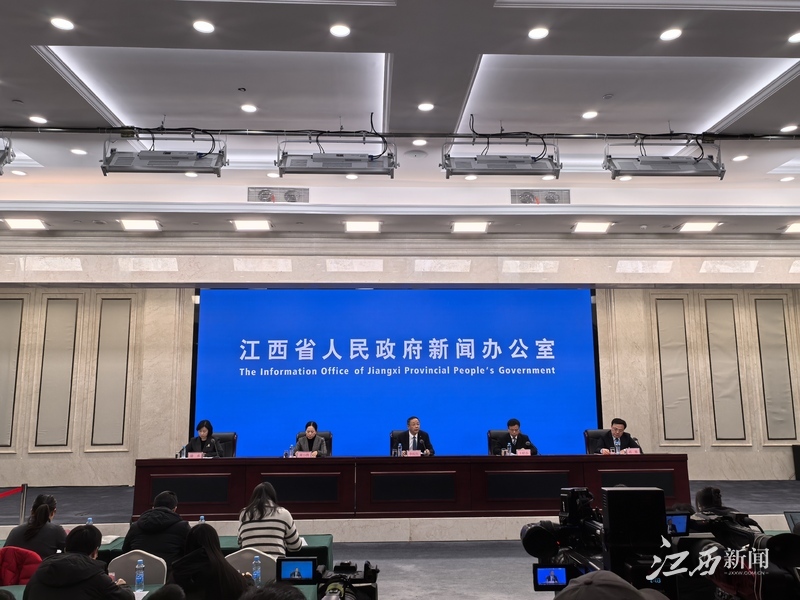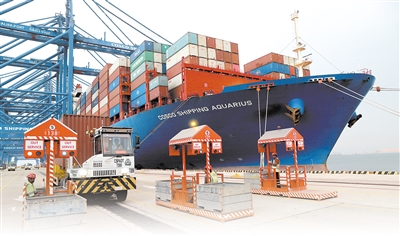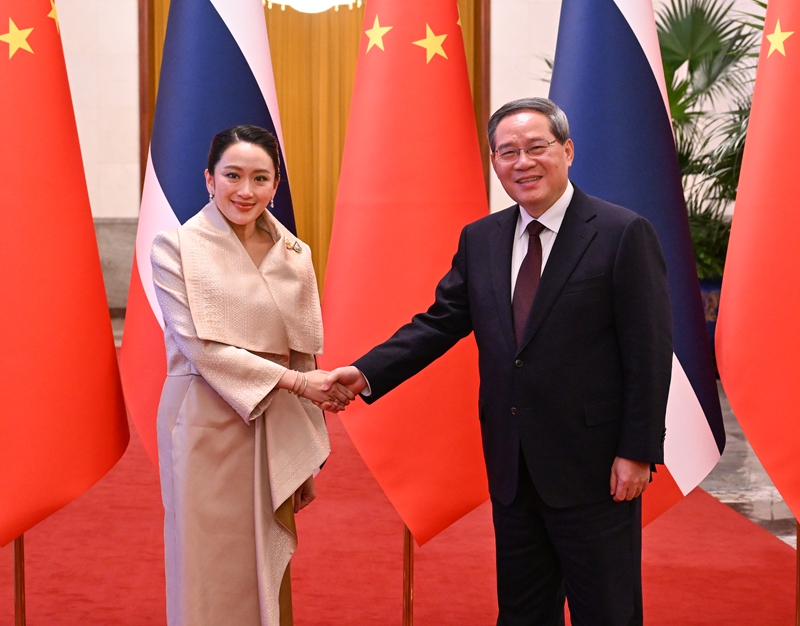Zhang Zhonglin: "Japan Has Brought Prosperity To Northeast China"? Stop Confusing Right And Wrong With These Words.
Zhang Zhonglin: "Japan Has Brought Prosperity To Northeast China"? Stop Confusing Right And Wrong With These Words.
Compared with the definition of "Eight Years of Anti-Japanese War" when I was a child, now there is a consensus of "14 Years of Anti-Japanese War", that is, the "September 18th Incident" on September 18, 1931 marked the beginning of the Anti-Japanese War.
This year marks the 80th anniversary of the victory of the Anti-Japanese War and the Anti-Fascist War. Compared with the definition of "Eight Years of Anti-Japanese War" when I was a child, now there is a consensus of "14 Years of Anti-Japanese War", that is, the "September 18th Incident" on September 18, 1931 marked the beginning of the Anti-Japanese War.
A few days before September 18th, I happened to be in Changchun. This is also the "capital" of the so-called "Manchukuo" established by Japan with support from Emperor Puyi of the late Qing Dynasty after the September 18th Incident.
If we take the so-called Puyi's accession to the throne in 1934 as the starting point for the establishment of the Puppet Manchukuo, until the Soviet Red Army launched the "August Storm" in 1945, the Puppet Manchukuo existed for a total of 11 years. During these 11 years, Japanese imperialism did not treat "Manchukuo" as an "independent country" as it claimed internationally, but treated it as a colony to plunder.
Behind the "Japan-Manchuria Amity" and "Greater East Asia Co-Prosperity" promoted by Japan are the Japanese pioneer groups who wantonly plundered the black land of the Northeast people, the Japanese consortium that sucked the Northeast's minerals and resources, and the Japanese army's notorious Unit 731 and Unit 100 who conducted human experiments on germ warfare against the Chinese people and committed heinous crimes against humanity! The history of the Puppet Manchukuo is the history of Japanese imperialism’s invasion, colonization, and plunder of China!
However, in recent years, there has been an argument that Japan tried its best to build "Manchukuo", making Manchukuo the most developed region in China at that time. When the Anti-Japanese War was victorious in 1945, most of China's industrial production capacity was in "Manchukuo", and it was Japan that brought prosperity to Northeast China.
This extremely typical reverse nationalist speech is full of "Jingri's" sophistry skills of distorting right and wrong, taking quotes out of context, and an unconcealable "colonial fetish." With the control of the Internet environment in recent years, the appearance of this type of speech has gradually decreased, but it has not completely disappeared, but is waiting in the corner for the day of comeback.
Fake prosperous palace
When you come to Changchun, you naturally have to go to the Puppet Manchukuo Imperial Palace. For those who are used to the Forbidden City and the Ming Forbidden City, the scale of the Puppet Manchukuo Palace is somewhat petty. When I stepped into the gate of the Puppet Manchukuo Palace and saw the main body of the palace, the architectural style gave me a very strange sense of déjà vu. I haven’t done much research on architecture, but it’s obvious that the architectural style of the Manchukuo Imperial Palace is not comparable to the traditional Chinese architectural style or even the architectural style of the Qing Dynasty. At most, some Chinese elements can be seen in some decorative details.
After thinking about it carefully, I suddenly realized, isn't this the "Japanese-Western" style I often see in Tokyo, Japan? To be more precise, the Imperial Palace of Manchuria is quite similar to the Tokyo National Museum built in 1938. It combines modern reinforced concrete buildings with traditional Japanese/Chinese roof styles, which is the so-called "Imperial Crown Style/Xingya Style" in Japan.

The main building of the Puppet Manchukuo Palace, Tongde Hall

The Tokyo National Museum was built at about the same time, and the styles of the two are quite similar.
After walking into the interior of the Puppet Manchukuo Palace (Tongde Hall), this hall felt more familiar to me. Except for the chandelier at the top, which has obvious characteristics of traditional Chinese palace lanterns, the whole building is a Japanese-style mansion. Considering that the Puppet Manchukuo Imperial Palace here was built after Japan occupied Northeast China and established the Puppet Manchukuo State, it is not surprising that it is filled with Japanese architectural features from the Meiji period to the Showa period. The Chinese elements are undoubtedly intended to highlight the characteristics of "Manchukuo" itself. While treating Manchukuo as a colony, they also pretended to call it an "independent country". Such deceptions abounded throughout the entire Imperial Palace of Manchukuo.

The traditional palace lantern-style chandelier at the top of the Tongdeden hall is incompatible with the overall Japanese and Western style.
The Imperial Palace of the Puppet Manchukuo was built by Japan for Puyi to live and work in order to show his "emperor's style". Therefore, the decorations and appliances in the building were all extremely luxurious to show his "royal style". But in essence, this luxurious palace was a prison where the Kwantung Army monitored and imprisoned Puyi. There are multiple interview rooms in the palace for Puyi to meet ministers, foreign guests, etc., but what is surprising but not surprising is that there is a special audience room (reception room) for Puyi to meet with the commander of the Kwantung Army. Compared with other reception rooms where guests only have chairs to sit, in the reception room where the Kwantung Army commander was received, the guest seats were sofas and the treatment was obviously different. Moreover, in the layout, the host and guest are equal, only the "dragon chair" shows the difference.

The reception room in the Imperial Palace of the Puppet Manchukuo was specially used to receive the commander of the Kwantung Army.

An audience room used to receive ministers. Guests can only sit in soft chairs, and the layout is clearly defined.
Japan's control over Puyi was extremely thorough. In a small building next to Tongde Hall, there is an office of Yasuo Yoshioka. As a senior staff officer of the Kwantung Army, he has long been the representative of the "Emperor" of the Kwantung Army. He is responsible for monitoring and controlling Puyi, and works in the palace next to Puyi. It was precisely because of his "effectiveness in work" that he was promoted from lieutenant colonel (lieutenant colonel) to lieutenant general in just ten years. The relationship between the Kwantung Army and Puyi is completely that of the Supreme Emperor and his son-Emperor.

"Supervisor" Yoshioka Yasuo's office
And if you look carefully at the badges and medal system of the "Puppet Manchukuo Royal Family", you will find that this is simply a clumsy "large-scale imitation show." Take the orchid emblem of the puppet Manchukuo royal family as an example. At first glance, it can easily remind people of the chrysanthemum emblem of the Japanese royal family. Moreover, on various items, the use of orchid and chrysanthemum emblems together has almost no sense of inconsistency, and the design language is highly similar.
But if we trace back the history of the Qing Dynasty and Northeast China, the orchid does not have enough historical origins and allusions to serve as a "royal emblem." The Japanese distorted the allusions of ancient Chinese books and took the meaning from the "Book of Changes" "When two people are of the same mind, their sharpness can break through metal; if they speak with the same mind, they smell like orchids" to symbolize "the unity of Japan and Manchuria and the friendship between gold and orchids". It can even be said that the orchid badge was designed with the intention of annexing and absorbing "Manchukuo".

Japanese chrysanthemum emblem plate and Manchurian orchid emblem plate
The medals and honor system of the Puppet Manchukuo looked even more familiar. Even if I am not a medal collector, I can still see a lot of Japanese medals among the Manchukuo medals on display. It can be said that the Puppet Manchukuo was completely a crude "large Japan" under the leadership of the Japanese, showing that the puppet state was in line with the sovereign state. The Manchukuo Imperial Palace is undoubtedly the glossy packaging of this clumsy "Japan".

The medals and honor system of the Puppet Manchukuo are completely copied from Japan
"No matter how luxurious the Puppet Manchukuo Imperial Palace is, what does it have to do with the people of Northeast China?"
The "achievement" of "Manchukuo" does not belong to the people of Northeast China
In the warm corridor of the Puppet Manchukuo Palace Museum, a large number of landmark buildings built by Japan in Changchun during the "Puppet Manchukuo" period are displayed on the walls. Objectively speaking, after the establishment of the "Puppet Manchukuo" in 1932, in order to maintain long-term rule in the Northeast, Japan planned to build Changchun as a "model city" and a "show window" for external display to demonstrate its strength, soften the resistance of the Northeast people, and promote its colonial rule.

Comparison of Changchun's "Datong Square". The top picture is after Japan completed its basic construction in 1936, and the bottom picture is before Japan's construction in 1932. Today it is Changchun People’s Square
Some of these buildings are used by various departments of the puppet Manchukuo regime, such as the Mongolian Ministry of Political Affairs Building, the Police Department, the Ministry of Transportation, the Ministry of Justice, the Ministry of Military Affairs, etc. And these buildings, like the Imperial Palace of Manchukuo, were designed and built in Japan, and are full of Japanese style. The most typical one is the State Council Building of Puppet Manchukuo. Because it is so similar to the National Assembly Hall in Tokyo, I recognized it at a glance. And considering that the construction time is basically the same as before and after, this result is not surprising.

State Council of Manchukuo

It is highly similar to the Tokyo National Diet Building completed in 1938.
During the Manchukuo period, Changchun was renamed "Xinjing". One explanation for "Xinjing" is the new capital of the "Puppetry of Manchukuo", but in my opinion, it obviously means "New (Tokyo)", so much so that when I see some old photos showing the streets of Changchun during the Puppetry of Manchukuo, I feel like it is Tokyo in the 1930s.
But at that time, Japan invested huge sums of money in the construction of "New Beijing", was it to build a "promised land of kings"? These government agencies of the puppet Manchukuo were all tools used by Japan to rule the Northeast, and they were the cost of colonization.

And those factories and companies built in "Puppet Manchukuo" also belong to the Japanese chaebol, and are their tools to suck the blood of Northeast China. No matter how novel and tall the building is, no matter how high-capacity the factory is, or how advanced the construction is, it still belongs to the Japanese colonizers. What does it have to do with the people of Northeast China? These glorious buildings are tentacles rooted in the land of Northeast China that are knocking bones and sucking marrow. They are the lair of Japanese imperialist colonists. They are ironclad evidence that Japan colonized Northeast China and controlled the lifeblood industries of Northeast China!

Nippon Woolen Co., Ltd. was very new and trendy at the time.

The Kantoku Hall of the Puppet Manchukuo was built by the Mitsubishi Zaibatsu and many companies have offices here.
Manchukuo Telegraph and Telephone Co., Ltd. is the center of telegraph, telephone, and broadcasting in Northeast China.
After liberation, most of these Japanese-era buildings were retained by the new People's Government for other uses. Some became schools, some became hospitals, some became office buildings of government agencies, and some became hotels. For example, the former official residence of the Kwantung Army Headquarters is now the Songyuan Hotel. I originally planned to stay there, but had to cancel it due to requisition for government activities.
These buildings built by Japan now serve the people of Northeast China, but they cannot change the original intention of their construction for Japan's colonial rule and to build them as the "General Rear Area of the Empire." Behind the seemingly glamorous Manchukuo, there is the blood and tears of the people of Northeast China.

The former State Council of Manchukuo has now become the Basic Medical College of Jilin University
The blood and tears behind the puppet Manchukuo
The circulation planning of the Puppet Manchukuo Palace Museum is quite meaningful. Outside the east exit of the Puppet Manchukuo Palace Museum is the Northeastern Occupy History Exhibition Hall. After visiting the glorious Imperial Palace of the Puppet Manchukuo, it is also a very meaningful arrangement to visit the sufferings suffered by the Northeast during the fall of the Northeast for fourteen years. Judging from the introduction of the exhibition panels, there is also a special exhibition on the Anti-Japanese Alliance and an exhibition of evidence of bacterial warfare crimes of Japan’s 100th Army.

Unfortunately, as the flight time was approaching, I did not have enough time to visit the Northeastern Occupation History Exhibition Hall. As a result, I received a call informing me that the flight was delayed for one hour as soon as I drove away. If I were only 10 minutes early, I would have enough time to visit the Northeastern Occupation History Exhibition Hall. This is also the biggest regret of this trip to Changchun.
However, as someone who has a good understanding of the history of the War of Resistance, it is very clear what kind of suffering the people of Northeast China suffered under the rule of the "Puppet Manchukuo". The glamorous "Puppet Manchukuo" is the puppet Manchukuo of the Japanese and high-level officials, and has nothing to do with the common people.
In the Northeast, which is rich in natural resources, oil can be produced from the black soil. However, under Japan's economic plunder, it became an "economic crime" for Chinese people to possess or eat rice and flour. The food produced by the people was forcibly confiscated, and all they could eat was the so-called "Xiehe noodles", mixed with corn, millet and even elm seed powder. And even this kind of "Xiehe Noodles" is in limited supply, leaving the people in the Northeast struggling to survive in the famine.
The Kwantung Army's "Manchu and Mongolian pioneering immigration" in order to stabilize the "Puppet Manchukuo" rule brought even greater suffering. Relying on the bayonets of the Japanese army, hundreds of thousands of "pioneering regiments" immigrated and colonized along the railway lines and key points, and together with the Kwantung Army formed a ruling network over the Northeast. In order to occupy high-quality fertile land, they plundered the land and production materials of the Northeastern indigenous people. But now, Japan actually still has the nerve to cry about the misfortune of the "Pioneering Group"!
In order to suck the blood of the Northeast, the Japanese army and the "Puppet Manchukuo" mobilized for "public service", using the Concord Society, the military police Xiante, and the local Baojia system as the starting point, to forcibly recruit workers for mining, logging, road construction and other work. They even sent tens of thousands of Chinese workers to Japan to engage in high-intensity work such as mining and construction sites. A considerable number of them never returned to their hometowns. When I visited Nagasaki Peace Park, I saw the Memorial to the Victims of Chinese Workers. This monument commemorates the Chinese workers who were imprisoned in Urakami Prison and died in the atomic bombing of Nagasaki. It silently accuses the persecution of the Northeastern people by Japan's "Puppet Manchukuo".

Chinese workers who were taken to Japan and imprisoned in prisons were also killed in the Nagasaki nuclear explosion. Pictured is the monument.
The suffering of the people in the Northeast under the rule of Manchukuo was not limited to battlefields or prisons, but was ubiquitous in institutionalized daily life: the "Xiehe Noodles" on the dining table, the cloth and oil and salt controlled by rationing in the cupboards, the grade difference on the household registration and ration certificates, the "outload" indicators posted at the village entrance, the day and night and hunger and cold in the mines... These tragic experiences formed an extremely ironic contrast with the "Paradise of Kings" promoted by Japan.
The arduous fourteen-year war of resistance began with the fall of Northeast China on September 18. The essence is still the same: if you fall behind, you will be beaten. Only by building a modern army capable of protecting the country can history be prevented from happening again. Every Chinese will never agree or allow something like September 18th to happen again in China!

When leaving the Puppet Manchukuo Palace Museum and the Northeastern Occupation History Memorial Hall, I happened to encounter a group of young soldiers marching out. They were energetic and high-spirited. They came out wearing neat blue uniforms and shouting slogans. These young soldiers are most likely students from the Changchun Air Force Aviation University, visiting and studying on the eve of September 18th. They are the future eagles of the motherland and will guard the sky of the motherland. Their seniors and comrades will soon meet the people of the country at the Air Force Open Day, demonstrating the power and confidence of the People's Air Force.
They will guard the sky of the motherland and will not let September 18th happen again on this land!







